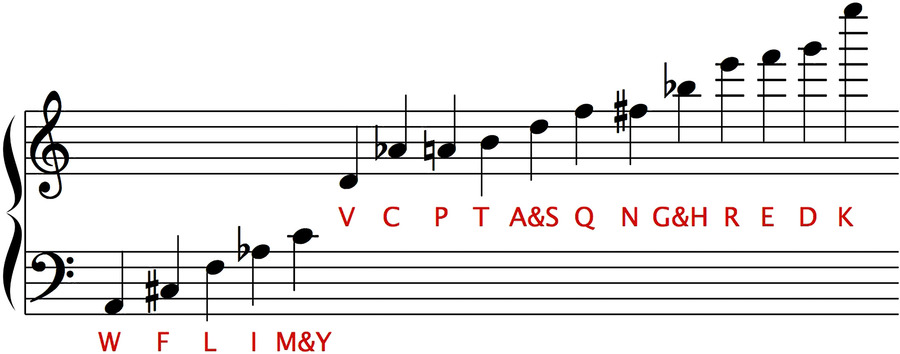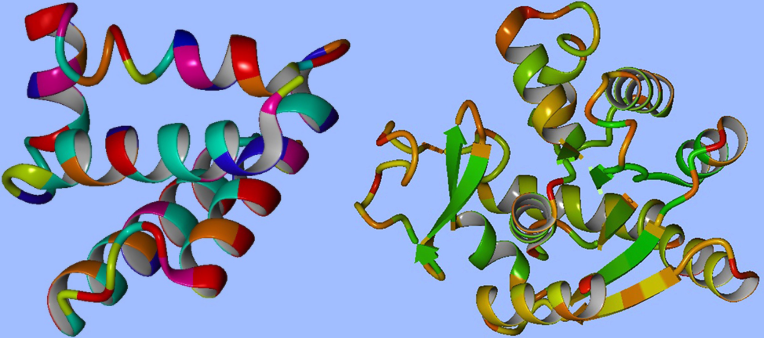Researchers are generating melodies from proteins’ structures. It could be used to understand protein folding and anomalies that contribute to disease.
Protein folding is an infamously difficult phenomenon to understand and predict from sequence data. A collaboration between a resident composer at the University of Tempere in Finland and a scientist at the Francis Crick Institute in England are developing a whole new way to approach it: they have developed software, described in a Heliyon article, that interprets protein structure as a song so researchers investigating a protein can ‘hear’ its features. This project could become a powerful new tool to detect anomalies that cause all kinds of diseases.
Protein fold assignment is a notoriously tricky area of research in molecular biology. One not only needs to identify the fold type but to look for clues as to its many functions. It is not a simple matter to unravel these overlapping messages. Music is seen as an aid towards achieving this unraveling.” Robert Bywater, Francis Crick Institute.

Scientists usually approach protein folding visually with microscopy to see proteins’ crystal structures, but aurally is an equally powerful way to recognize and differentiate between patterns in such a macromolecule. Moreover, it has been shown that people can usually connect melodies to images, suggesting it is possible to ‘hear’ visual input.
With this in mind, Robert Bywater and Johnathan Middleton set out to transform protein structures into songs composed from their sequence data. The technique, called sonification, integrates evolutionary information, secondary structure, flexibility, hydropathy and solvent accessibility to paint a portrait of the protein as close to comprehensive as possible.
We are confident that people will eventually listen to data and draw important information from the experiences. The ears might detect more than the eyes, and if the ears are doing some of the work, then the eyes will be free to look at other things.” Jonathan Middleton, University of Tampere/Eastern Washington University.

The next step will be to train protein scientists with this tool so that they can detect irregularities in protein structures like mutations that could impact protein folding. Once deleterious mutations are identified, they can be treated as targets in the development of drugs to cure incipient degenerative diseases like Alzheimer’s and Parkinson’s.
Sonification could also be applied to gene sequences to identify targets for CRISPR therapies and cure genetic disease. Beyond all of these potential uses, the music is reportedly nice to listen to – even if the applications don’t pan out, it would be fun just to hear the proteins ‘sing’!
Reference: Bywater & Middleton. Heliyon. 2 (2016), e00175. DOI: 10.1016/j.heliyon.2016.e00175
Featured Image: Rawpixel.com
Images from the reference article in Heliyon




